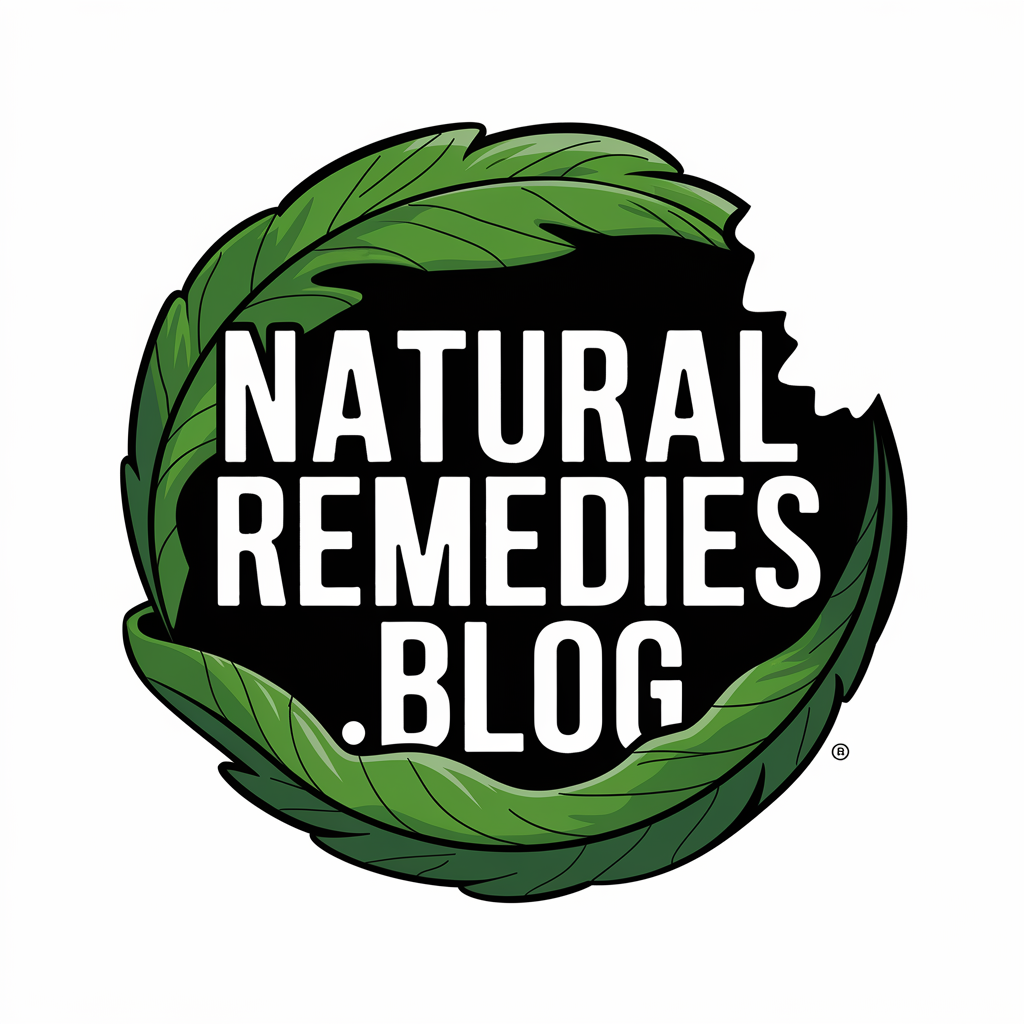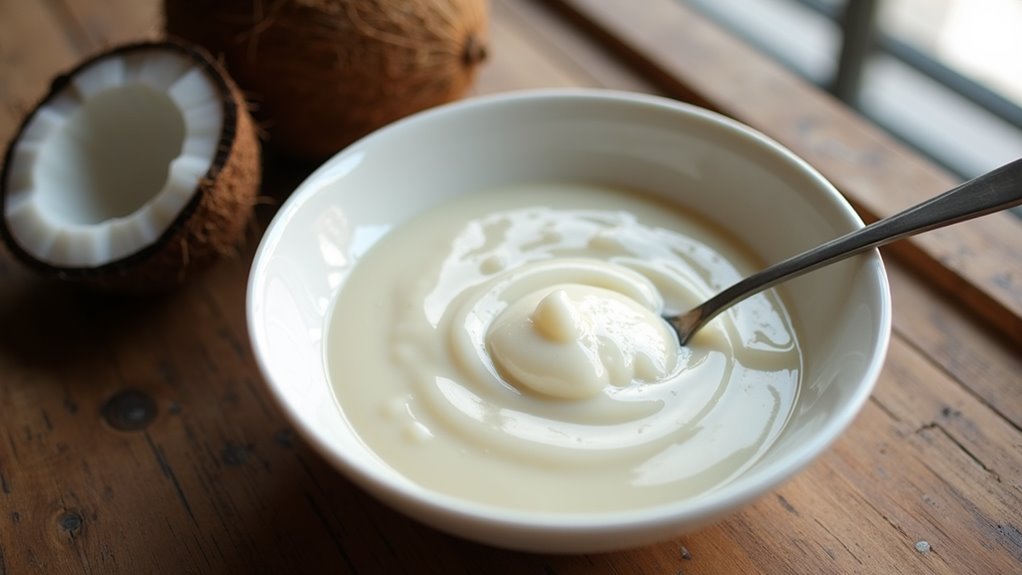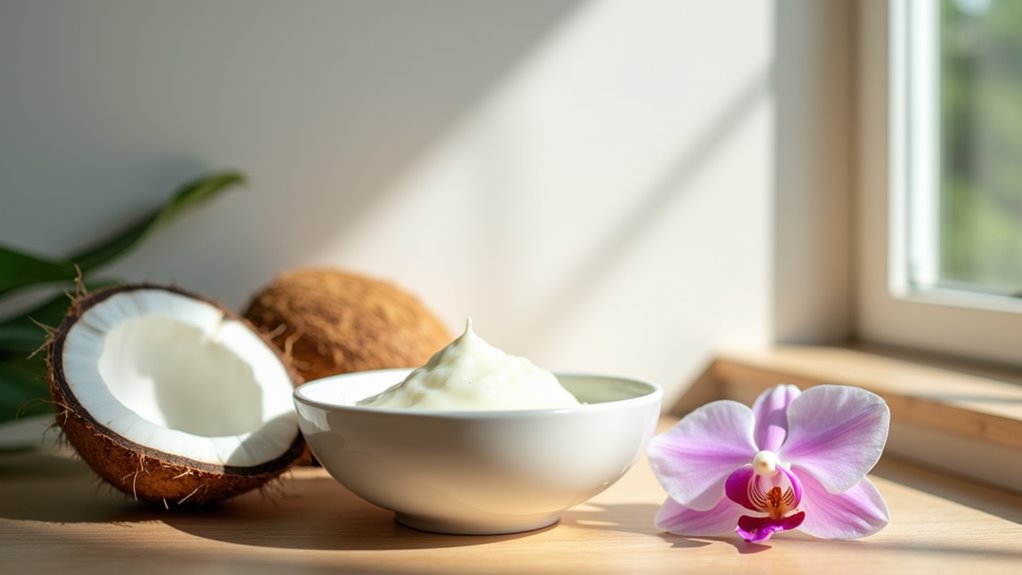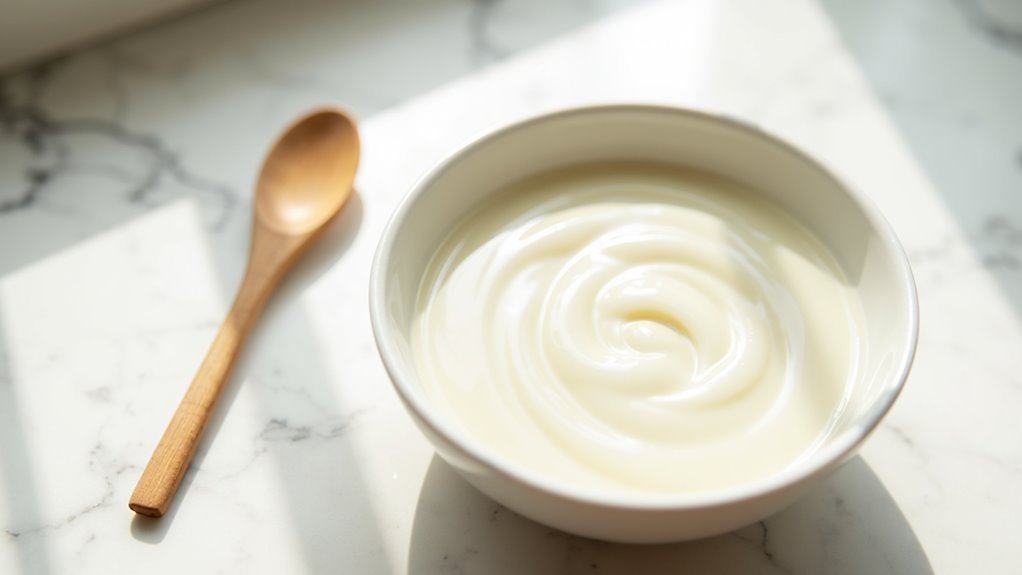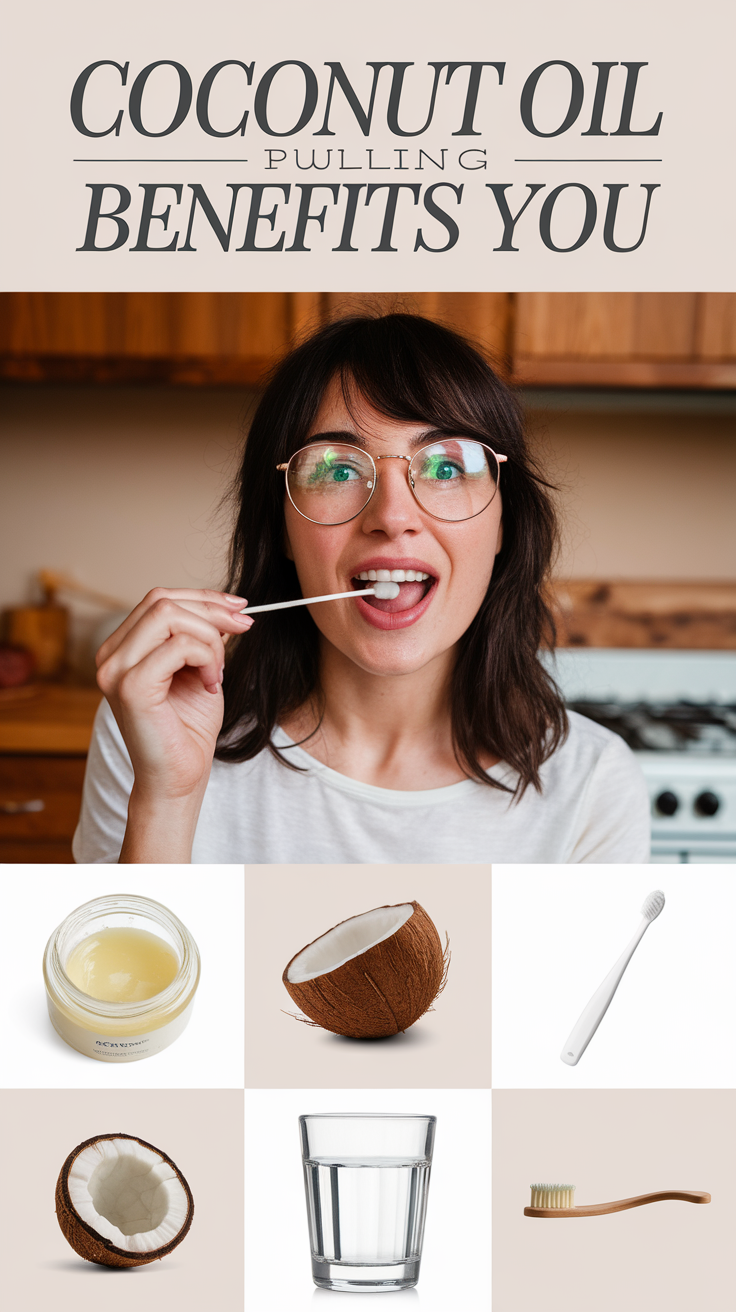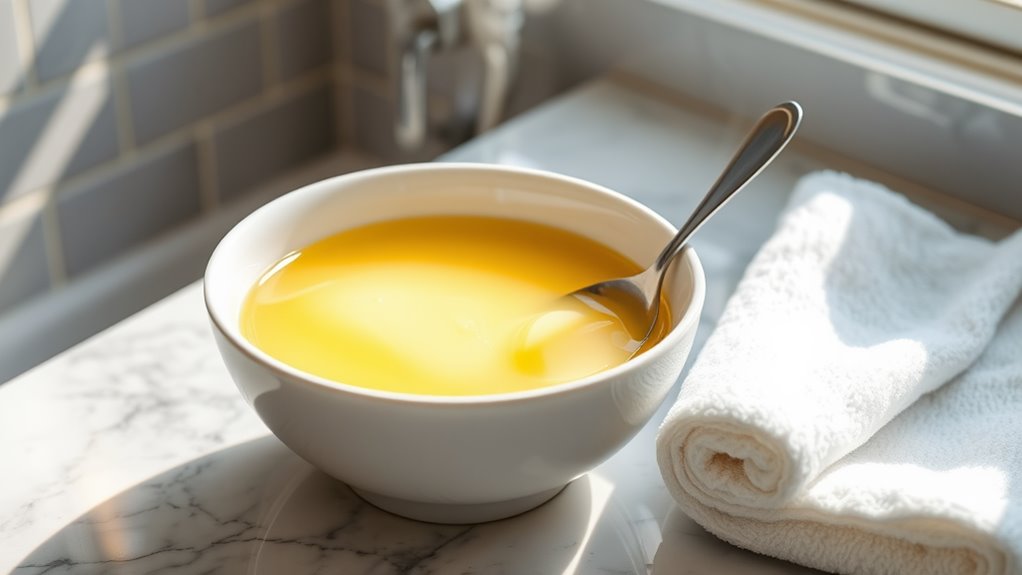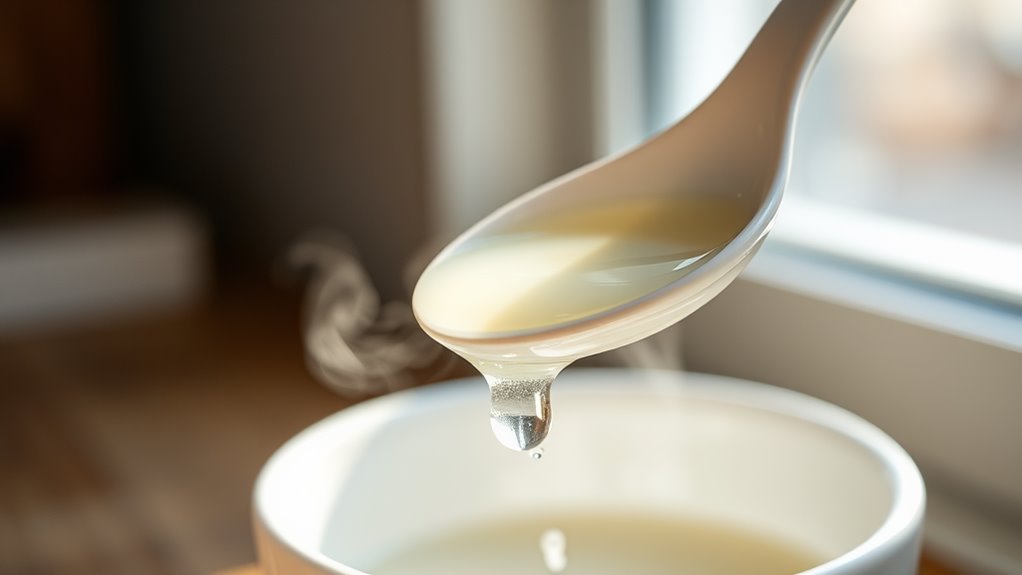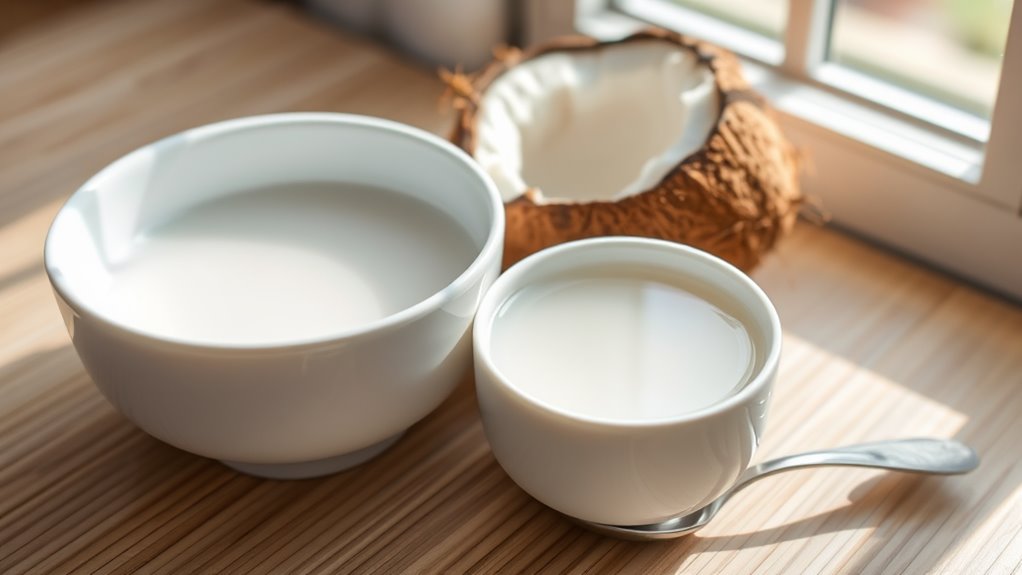What No One Tells You About Coconut Oil Pulling for Oral Health
While you’ve likely heard about oil pulling’s benefits for oral health, you won’t get results without proper technique. You’ll need to swish coconut oil for 15-20 minutes on an empty stomach, using cold-pressed virgin oil specifically. Don’t brush immediately before, swallow the oil, or use hot water to dilute it. Most people see fresher breath within two weeks and whiter teeth by week four, but there’s much more to this ancient Ayurvedic practice than meets the eye.
The Ancient Origins of Oil Pulling: Beyond the Trendy Practice
While oil pulling has gained significant popularity in recent wellness circles, its roots trace back over 3,000 years to ancient Ayurvedic medicine in India. Known as “gandusha” or “kavala,” this practice was traditionally performed using sesame oil to cleanse the mouth of toxins and restore balance to the body’s doshas.
Today, oil pulling with coconut oil has become the modern adaptation of this time-tested technique.
The ancient practitioners understood what science now confirms – that oral health directly impacts overall wellness. They viewed this practice not as a trendy quick fix, but as an essential part of daily self-care and disease prevention.
Modern research shows Streptococcus mutans bacteria can be significantly reduced through regular oil pulling sessions.
The Science Behind Coconut Oil’s Antimicrobial Properties
When you swish coconut oil in your mouth, its unique fatty acids actively break down harmful bacteria’s cell walls, making it an effective natural cleanser for your oral microbiome.
The chemical structure of coconut oil lets it penetrate deep into plaque biofilms where ordinary mouthwash can’t reach, helping prevent tooth decay at its source.
Your body’s natural defense mechanisms work in harmony with coconut oil’s antimicrobial properties, creating a powerful shield against oral pathogens without harsh chemicals.
Through a natural process called saponification, the oil transforms into a soap-like substance that effectively cleanses the oral cavity.
Fatty Acids Attack Bacteria
The antimicrobial power of coconut oil comes from its high concentration of medium-chain fatty acids, particularly lauric acid and capric acid.
When you swish coconut oil in your mouth, these fatty acids break down into monoglycerides that penetrate bacterial cell membranes. This disruption essentially causes harmful bacteria to dissolve.
What’s fascinating is that these fatty acids don’t harm beneficial bacteria in your mouth’s microbiome. They specifically target harmful microorganisms, including Streptococcus mutans, the primary culprit behind tooth decay.
The fatty acids also help reduce inflammation and create an environment where healthy bacteria can thrive naturally.
Chemical Structure Fights Decay
Molecular structure of coconut oil plays a crucial role in its decay-fighting abilities. The medium-chain fatty acids, particularly lauric acid, can penetrate bacterial cell membranes due to their unique chemical composition.
When you swish coconut oil, these fatty acids break down into monolaurin and other antimicrobial compounds.
You’ll find that coconut oil’s structure gives it an edge over other oils. Its molecules are small enough to slip between tooth surfaces and below the gum line, where they can effectively combat harmful bacteria.
This natural configuration makes coconut oil particularly effective at preventing tooth decay and maintaining oral health.
Natural Antimicrobial Mechanisms Work
Research has confirmed that coconut oil’s antimicrobial properties stem from its unique ability to disrupt bacterial cell membranes. When you swish coconut oil in your mouth, its medium-chain fatty acids, especially lauric acid, penetrate and break down harmful bacteria’s protective outer layers. This natural mechanism effectively destroys cavity-causing bacteria without harsh chemicals.
Unlike conventional mouthwashes that indiscriminately kill both good and bad bacteria, coconut oil’s selective antimicrobial action targets harmful microorganisms while preserving your mouth’s beneficial flora.
The oil’s molecules bind to bacterial membranes, causing them to break apart and preventing bacteria from sticking to your teeth.
Common Mistakes That Reduce Oil Pulling Effectiveness
While oil pulling offers numerous oral health benefits, making certain mistakes can significantly reduce its effectiveness as a natural dental care practice.
You’ll undermine results if you swish too vigorously, use water that’s too hot to melt the oil, or pull for less than 10 minutes.
Don’t swallow the oil – it contains toxins. Avoid oil pulling right after meals or on a full stomach, as this dilutes its detoxifying power.
Skip brushing your teeth immediately before pulling, since the oil needs to interact directly with oral bacteria and plaque.
Unexpected Side Effects and Who Should Avoid Oil Pulling
Even natural remedies like oil pulling can produce unwanted side effects in some people. You might experience jaw soreness, excessive saliva production, or a temporary change in taste sensations.
In rare cases, some users report headaches or nausea during the first few sessions.
You’ll want to avoid oil pulling if you have a history of lipoid pneumonia, jaw problems like TMJ, or allergies to coconuts.
Children under five, pregnant women, and those with dental work in progress should also skip this practice. If you’re taking medications that require precise timing, don’t oil pull within two hours of taking them.
For optimal safety and effectiveness, practice oil pulling with room temperature oil to prevent potential digestive discomfort and ensure proper bacterial removal.
Optimal Timing and Technique for Maximum Benefits
You’ll get the most benefit from oil pulling first thing in the morning on an empty stomach, though evening sessions can still offer advantages for those with busy schedules.
The key is to be consistent with your timing and maintain the full 15-20 minute duration of swishing, as shorter sessions won’t allow the oil to properly bind with bacteria and toxins.
If you’re just starting out, you can build up gradually from 5-10 minutes until you reach the optimal duration, ensuring you don’t strain your jaw muscles.
Morning Vs Evening Sessions
The optimal timing for oil pulling can significantly impact its effectiveness, with morning sessions generally offering the greatest benefits.
When you perform oil pulling first thing in the morning, you’ll remove bacteria that accumulated overnight before they can affect your oral health. Your saliva production is also lower during sleep, making morning the ideal time to clear out toxins.
Evening sessions can still be beneficial, especially if you can’t fit morning pulls into your schedule.
However, you’ll want to wait at least 4 hours after your last meal to ensure you’re not interfering with digestion or pulling undigested food particles.
Duration Makes a Difference
While many practitioners recommend different durations for oil pulling, research suggests that 15-20 minutes provides optimal benefits for oral health. The timing is crucial because it allows the oil to effectively break down harmful bacteria without stressing your jaw muscles.
-
Pull for less than 15 minutes, and you won’t give the oil enough contact time to bind with toxins and bacteria.
-
Go beyond 20 minutes, and the oil begins redepositing the collected toxins back into your mouth.
-
If you’re new to oil pulling, start with 5-10 minutes and gradually work up to the full duration.
Combining Oil Pulling With Your Current Dental Routine
Integrating oil pulling into your existing dental care routine requires thoughtful timing and sequence to maximize its benefits.
For best results, practice oil pulling first thing in the morning, before eating, drinking, or brushing your teeth. After completing your 15-20 minute oil pulling session, rinse thoroughly with warm water, then proceed with your normal oral hygiene routine.
Don’t replace brushing, flossing, or professional dental care with oil pulling – instead, use it as a complementary practice.
You’ll want to maintain regular dental checkups while incorporating this ancient technique. Oil pulling works synergistically with modern dental care to support your overall oral health goals.
The lauric acid in coconut oil makes it particularly effective at breaking down harmful bacteria during your morning routine.
Real Results: What to Expect Week by Week
Many people starting their oil pulling journey want to know what changes they can expect to see and when.
While individual results vary, you’ll typically notice improvements following this timeline:
-
Week 1-2: You’ll experience fresher breath and less coating on your tongue as harmful bacteria begin to decrease.
-
Week 3-4: Your teeth will start looking whiter and feeling smoother, with reduced plaque buildup.
-
Week 5-6: You may notice healthier gums, less sensitivity, and improved overall oral health.
Studies show that combining oil pulling with brushing produces superior results compared to brushing alone.
Consistency is key to achieving these benefits.
Remember to maintain your regular dental hygiene routine while incorporating oil pulling for optimal results.
Why Some Dentists Remain Skeptical About Oil Pulling
While you’ll find many enthusiastic supporters of oil pulling online, the professional dental community remains divided on its effectiveness.
Scientific research on oil pulling is still in its early stages, with only a limited number of peer-reviewed studies available to validate traditional claims.
Your dentist’s skepticism likely stems from this lack of comprehensive clinical evidence, as dental professionals typically base their recommendations on well-established scientific research rather than traditional practices alone.
Limited Scientific Evidence Available
Despite growing interest in oil pulling as a natural oral care practice, scientific research supporting its effectiveness remains limited.
While traditional Ayurvedic medicine has used this technique for centuries, modern clinical studies are few and often lack rigorous methodology.
You’ll find these key limitations in current research:
- Most studies have small sample sizes of less than 50 participants
- Few long-term studies exist beyond 30 days of practice
- Clinical trials often lack proper control groups and randomization
While anecdotal evidence suggests benefits, you’ll need to consider that more comprehensive research is necessary before making definitive claims about oil pulling’s therapeutic effects on oral health.
Professional Opinions Remain Divided
Professional dentists and oral health experts have reached different conclusions about oil pulling’s role in dental care, creating a notable divide in the medical community.
While some dental professionals embrace oil pulling as a complementary practice, citing its potential antibacterial properties and traditional use, others maintain skepticism due to insufficient clinical research.
You’ll find dentists who recommend it alongside conventional oral care, particularly for patients seeking natural alternatives.
However, many traditional practitioners warn against replacing proven dental practices with oil pulling alone. They emphasize that any potential benefits should be viewed as supplementary to regular brushing, flossing, and professional cleanings.
Selecting the Right Type of Coconut Oil for Pulling
Choosing the right coconut oil is essential for effective oil pulling and optimal oral health benefits. You’ll want to select an oil that’s pure, organic, and specifically suited for this ancient practice.
When shopping for coconut oil for pulling, look for these key qualities:
- Cold-pressed, unrefined virgin coconut oil that retains its natural antibacterial properties
- Organic certification to ensure it’s free from pesticides and harmful chemicals
- Glass container packaging to avoid potential plastic contamination
Don’t settle for refined or processed versions, as they’ve been stripped of their beneficial compounds through high-heat treatment and chemical processing.
The oil’s lauric acid content helps fight harmful bacteria in the mouth while supporting overall immune function.
Beyond Teeth: Surprising Full-Body Benefits of Oil Pulling
While oil pulling has gained popularity for its remarkable effects on oral health, this ancient Ayurvedic practice offers benefits that extend far beyond your teeth and gums.
You’ll notice improved lymphatic drainage, reduced inflammation throughout your body, and enhanced immune function. The practice helps remove toxins from your bloodstream and boost metabolism.
Many practitioners report clearer skin, reduced headaches, and balanced hormones.
The act of swishing coconut oil also stimulates key meridian points in your mouth that connect to various organs.
You might experience better digestion, increased energy levels, and improved mental clarity as your body naturally detoxifies.
The medium-chain fatty acids in coconut oil provide powerful antimicrobial properties that support overall wellness.
